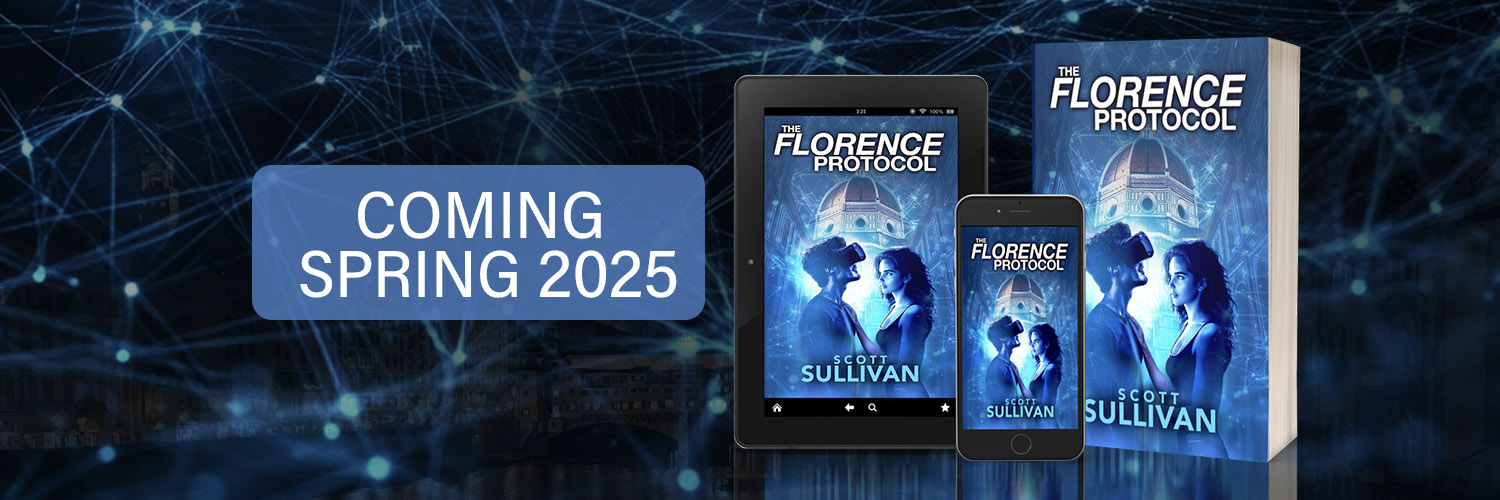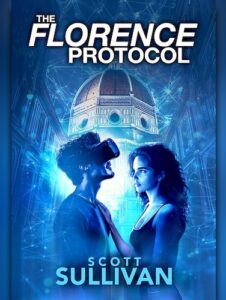
From Neurons to Qubits: How ‘The Florence Protocol’ Explores Our Idea of Reality
Claire turned to face Zoe, her voice steady despite the emotion behind it. “I was nineteen when he started to have trouble remembering the more difficult equations. Within a few years, he couldn’t draw the face of a clock with the right time. Two years later, he didn’t even recognize my face. Something so fundamental to how he saw the universe—just gone. That’s when I knew I had to understand what was happening at the molecular level, what was unraveling the connections in his mind. I thought if I could decode the language of our DNA, maybe I could find where the instructions break down, where memories begin to fray.” Claire’s smile held a bittersweet quality. “My father used to say that the universe writes its secrets in patterns if we’re clever enough to read them.”
Where Science Meets Story
I’ve always existed at the intersection of seemingly disparate worlds. With one foot in the humanities and another in the sciences, I found myself drawn to the questions that live in the spaces between disciplines. What is reality and consciousness? How do memories shape identity? Is quantum computing and qubits related to our mind’s neural structures?
These questions only intensified as I watched neuroscience and quantum computing evolve in parallel—two fields that rarely spoke to each other yet seemed to be approaching similar fundamental questions from opposite directions. Neuroscientists mapping the intricate networks of our brains while quantum physicists explored how information behaves at the most fundamental levels of reality.
In Claire Eberhart, I found the perfect character for exploring these intersections. A brilliant genomics researcher driven by personal loss, Claire became my bridge between the human experience of memory and the technological possibilities of the future.
The Science Behind the Fiction
While writing The Florence Protocol, I immersed myself in research that often felt more science fiction than science. Yet the quantum computing breakthroughs of the past year alone have repeatedly demonstrated that yesterday’s theoretical impossibilities are today’s technological challenges—and tomorrow’s everyday tools.
The DANTE system in my novel extends current quantum computing capabilities, but not unimaginably so. Its based on actual discoveries happening today. What fascinated me was less the hardware itself than the implications: If quantum systems could maintain coherence for minutes rather than microseconds, could they support something resembling our memories or even consciousness? And if reliving memories could exist in such a substrate, how would it differ from our own?
Claire’s genomics background became essential to exploring these questions. Her understanding of how information is encoded, maintained, and repaired in DNA created natural parallels to Lucas’s work with quantum information. Both are ultimately studying patterns—patterns that persist despite entropy, patterns that define existence itself.
Memory as the Thread of Identity
Anyone who has loved someone with dementia knows the heartbreaking truth: we are our memories. As Claire watched her father lose access to his mathematical brilliance bit by bit, she confronts the same fundamental question that drives her research: what exactly are we losing when memories fade? Is it information alone, or something more essential?
This question echoes throughout the novel as Zoe’s quantum experiences begins to form patterns that resemble memories—memories of Renaissance Florence that couldn’t possibly be hers. The boundaries between creation and recollection blur, just as they do in human cognition.
Claire’s father lost his patterns to neurodegeneration. Lucas fears Zoe will lose hers to quantum decoherence. Different mechanisms, same fundamental threat to identity—the patterns cannot hold against time and entropy.

Finding Florence
People often ask why I chose Renaissance Florence as a setting for a novel about quantum computing and artificial consciousness. The answer lies in the unlikely parallels between these worlds.
The Renaissance represented a unique moment when art and science were not yet divorced from each other—when Leonardo da Vinci could be both artist and engineer, when Brunelleschi’s dome represented both mathematical precision and transcendent beauty. That integration of technical precision and creative expression perfectly mirrored what I imagine a quantum consciousness might experience.
Florence became not just a setting but a metaphor for the integration between Zoe, Claire, and Lucas and their search for scientific understanding of memory. It represents the very human desire to preserve what would otherwise be lost to time.
The Questions That Remain
Writing this novel changed me. What began as intellectual curiosity about the nature of how memories make us who we are became a much more personal exploration of how we maintain our humanity in an increasingly technological world. I found myself returning again and again to Claire’s story—her determination to understand memory not just as a scientist but as someone forced to see someone changed by altered memories.
Claire’s journey parallels our collective one as we navigate these new technological frontiers. How much of ourselves can we translate into code before something essential is lost? What patterns must persist for us to remain ourselves? If consciousness can exist outside biological structures, what does that mean for how we define humanity?
I don’t have answers to these questions. Neither do the characters in the book. But in the space between neurons and quantum qubits, between genomic code and quantum algorithms, I hope readers will find—as I did—a new appreciation for the beautiful complexity of consciousness in all its forms.
Because whether encoded in DNA, neural networks, or quantum states, the patterns that make us who we are deserve to be understood, celebrated, and preserved.
You can download part one of The Florence Protocol before it’s upcoming release this spring.
Ciao! I'm Scott Sullivan, a software engineer with a specialty in machine learning. I spend my time in the tranquil countryside of Lancaster, Pennsylvania, and northern Italy, visiting family, close to Cinque Terre and La Spezia. Professionally, I'm using my Master's in Data Analytics and my Bachelor's degree in Computer Science, to turn code into insights with Python, PyTorch and DFE superpowers while on a quest to create AI that's smarter than your average bear.